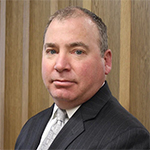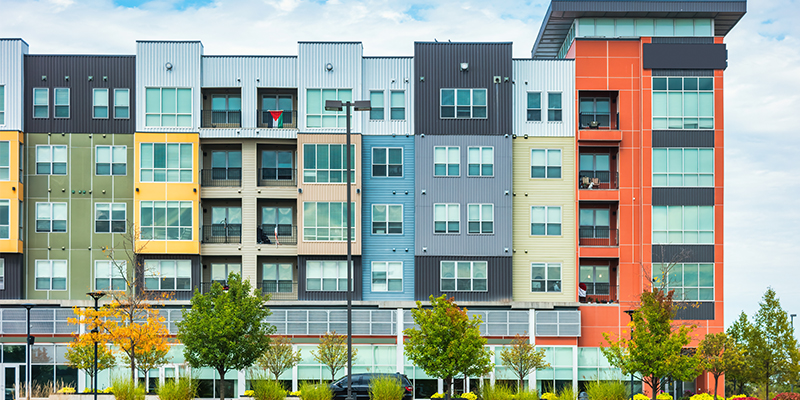NAIOP hosted a Texas summit meeting in Dallas last week for members of our Austin, Houston, and North Texas chapters to discuss the major issues facing the industry in the state. The summit provided members with the opportunity to engage in discussions on major trends and topics of importance to NAIOP and the commercial real estate industry. The summit was intended to strengthen communication between the chapters and provide an opportunity for identifying and advancing state legislative priorities that meet the future challenges for the state.
Following brief introductions and welcoming remarks, Daniel Quezada, senior associate development at Affinius Capital, kicked off the summit by leading a discussion on the nearshoring movement that is occurring along the Texas-Mexico border. Corporations are increasingly relocating their supply chain operations from China to Mexico in order to be closer to end-purchasers of their goods and services. The United States-Mexico-Canada Agreement, Mexico’s proximity to the U.S. market, and low labor costs were identified as the main drivers in the nearshoring movement along the southern border.
Quezada noted some of the challenges for nearshoring operations in Mexico as well. Notable challenges included reliable sources of power and water and maintaining a qualified workforce to meet demand. Crime in Mexico was also raised as a concern, with most companies determining that it is part of the cost of doing business there. The increased movement of goods between Texas and Mexico will also require the construction of additional points of entry and improved border-crossing processes that avoid excessive delays, according to Quezada. Potential crossing improvements may include dedicated border lanes for nearshoring operations and trucks.
The next session analyzed the political trends occurring within the state and its impact on legislative activity in Austin. Scott Braddock, journalist and political analyst for the Quorum Report, outlined the political unrest occurring within the leadership of the Republican-dominated state legislature. He highlighted the strained relationship between Lt. Gov. Dan Patrick and speaker Dade Phelan that first arose during legislative discussions on voter security following the 2020 election. The strained relationship was again evident this year with the seven-month long debate on property tax reform that all parties agreed was a legislative priority.
For his part, Texas Governor Greg Abbott has been embroiled in a long-run effort to pass a controversial school voucher bill that is opposed by Republicans from rural districts, calling special legislative sessions focused on the issue. The dysfunction has come at the cost of time devoted to business interests and the long-term economic issues important to the state. According to Braddock, the commercial real estate industry needs a much louder voice in the state capital.
Cullum Clark, Director of the Bush Institute-SMU Economic Growth Initiative, led the next session on the migration of businesses and families from California to Texas, primarily to the major metro areas of Dallas-Fort Worth, Hoston, San Antonio and Austin, known as the “Texas Triangle.” His presentation outlined the net California-to-Texas flow over the last decade that peaked at over 70,000 individuals, as the migration made the Texas Triangle America’s fastest-growing mega-region. Leading economic features of the Texas Triangle are:
- Top tech center between the coasts
- No. 3 financial center
- Top national centers for oil and gas, space, IT services, engineering, and inland logistics
- Largest medical complex in the world.
Clark acknowledged that many states, like Texas, have low taxes, but the business environment, growth-friendly policies, and diversity of industries have played a significant role in attracting businesses from California and other states to the Triangle cities. But existing challenges for the Triangle include the commute for workers to job centers, a lack of workforce housing, and a lack of reliable sources of water to meet growth demands.
Over lunch, the attendees discussed the landscape of important issues affecting commercial real estate in Texas heading into 2024. Areas of particular concern included identifying a sustainable supply of water, the rapidly growing need for electricity, and promoting an education system that produces a skilled workforce, including increased support for vocational/skilled trade schools.
The summit concluded with an economic outlook for the state by Laila Assanie, senior economist at the Federal Reserve Bank of Dallas. Her presentation provided an overview of Texas’s “surprisingly resilient” labor market, which has recovered all the jobs lost from the pandemic. The state’s economic activity has remained strong, even as bank lending transactions are down and loan delinquencies have increased. The economic challenges for the state include high inflation, high interest rates, the price of oil, and “disruptive” geopolitical events. However, Assanie noted that Texas is still well positioned for a “soft landing” because the economic fundamentals have remained strong even as the state has experienced a near-record high total net positive migration (350,000) in 2022.
NAIOP’s Texas State Summit was seen as a tremendous success by the participants and showed that the economic outlook for the state remains strong. The long-term impact of the trends discussed during the meeting, and the corresponding policy responses that will be needed to maintain a vibrant commercial real estate sector, underscore the need for a strong and consistent advocacy presence in the state capitol. Unsurprisingly, strengthening NAIOP’s relationship with state leaders was a core action item coming out of the summit.








